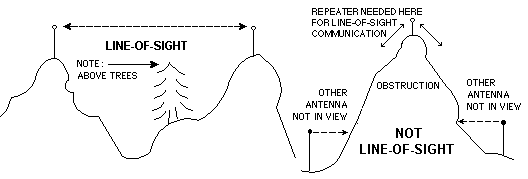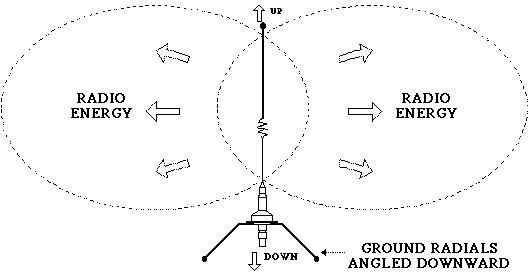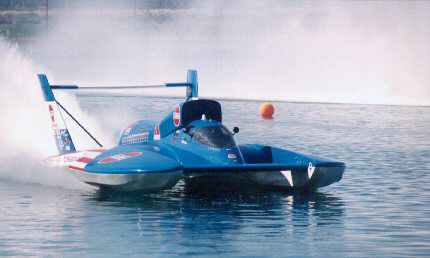|
|
||||
|
||||
|
|
Articles and Technical PapersLicense Free Ethernet Radio Modems— The Only Wireless Ethernet Modem Designed for Industrial Environments(an excerpt of this article appeared in Industrial Computing Magazine, April 1999) By David Mhoon Frequency Hopping Spread Spectrum TechnologyThe genesis for spread spectrum radio, as we know it today can be traced back to Hedy Lamarr, the Hollywood actress of the 1930’s and 40’s. Lamarr, along with her second husband George Antheil, received the first patent for "A Secret Communications System" that employed a unique radio frequency hopping technology. As it turns out, Lamarr’s first husband was Fritz Mandl, the Austrian Arms Manufacturer. Lamarr, smart as she was beautiful, listened carefully as she accompanied Mandl on his various business trips prior to WWII. The basic idea of their system was to synchronize a series of split second hops between radio frequencies as a way to create a torpedo guiding system that would be virtually impossible for the enemy to jam. Surprisingly, frequency hopping technology did not come into military use until 1962 when Sylvania installed it on ships sent to blockade Cuba. Today, spread spectrum frequency hopping is the principal anti-jamming device used in the U.S. Government’s $25 billion Milstar, Defense Communications Satellite System The essential principle behind the entire process of Spread Spectrum Communications is to spread a radio signal over a spectrum of frequencies. This "spreading" of the signal, or synchronized "frequency hopping", was initially developed as a means for the military to transmit data without the possibility of interception or jamming by the enemy. Today, this feature is used in a more benign fashion as a means to prevent the radio signal from being jammed by commercial noise interference. Because spread spectrum signals are so wide, they transmit at much lower spectral power density, measured in Watts per Hertz, than narrowband transmitters. This lower transmitted power density characteristic gives spread spectrum signals a great advantage because spread spectrum and narrow bands can occupy the same band with little or no interference. This capability is the main reason for all the interest in Spread Spectrum today. What this means for the industrial and commercial user is a military tested and proven data-communications system, which is virtually immune to noise. For industry, the reduction of noise in a radio data communication system becomes essential if reliable data is to be transmitted consistently without interference over any distance. A critical requirement of installing a Spread Spectrum Radio Communication System is--the antennae of the sending and receiving units must be in Line of Sight of each other. The sending unit or Repeater’s antenna must be able to see the receiving unit’s antenna. ^ Top of Page ^
There are many ways to accomplish this. There are two basic types of antennae that can be used: Omni antennae and Yagi antennae. Omni antennae emit spherical (doughnut shaped) signal in every direction, Yagi antennae emit narrow beam directional signals in only one direction.
A Yagi antenna must be aimed at the antenna with which it is intended to communicate.
Each type of antenna has its own application and some systems employ the use of both types. The antennae can be extended out from the unit by using a coaxial cable up to 200 feet in length. This allows for radio modem antennae to be installed on towers to increase line-of-sight availability. ^ Top of Page ^ Another major factor to consider with a Spread Spectrum Radio Communication System is range. Range varies by system and manufacturer. In many cases the distance between radio modems becomes a necessary design consideration. Obviously, low end, inexpensive radio modems will provide limited range between units and unreliable data communication. If an investment is going to be made in a Spread Spectrum Radio System, consider an option that provides a range of 20 miles with reliable data throughput. Range can also be extended by the use of Repeaters. Repeaters are used to receive a signal and boost its output so that quality data communications can be achieved over long distances or around obstacles such as mountains. Although first used by the military, the FCC opened the 902-928 MHz frequency spread spectrum radio band for commercial data-communication use in the early 1980’s, and today the technology is being utilized in a number of wireless capacities. The reasons for the explosive growth in the use of spread spectrum communication systems are numerous. Aside from the obvious cost savings of not having to install copper or fiber, spread spectrum radio can be operated without a site license. Spread spectrum radio systems are virtually noise immune, and a few manufacturers’ employ very sophisticated algorithms to filter noise to such a degree that spread spectrum becomes a viable option even in the noisiest environments. This creates one of the most solid terrestrial communication links available. In addition, radio modems have the capability to transmit data at 115.2K baud, which is extremely fast by today’s standards Extended temperature radio units are available to the industrial market, as are single and multi-port units. Spread spectrum radio communications represent the leading edge of data-communications and will be an investment that will have a functional life of 15-20 years at the very least. Frequency Hopping Spread Spectrum and EthernetA new link from the industrial world to the Ethernet world is emerging through the wireless technology of Frequency Hopping Spread Spectrum (FHSS) radio modems. Data-Linc Group is now delivering a license-free Ethernet-bridge radio modem, SRM6200E, that is providing a wireless link for process control equipment using Ethernet LANs. Based on the same robust (902-928 Mhz) RF technology as the SRM6000 (RS232), the SRM6200E has extremely high data reliability even in harsh environments. The SRM6200E offers a 10BaseT interface to the Ethernet device or hub. It uses MAC layer bridging for true protocol transparency and fully supports TCP/IP. Data throughput rates up to 100 kbps allow use in most Ethernet control applications. This data rate was specifically designed to provide short and long range data integrity with omni antennas. Communication is extremely reliable with line-of-sight between omni antennas up to 15 miles. Recent application has proven actual distance of 30 miles, still using 3db omni antennas! Repeaters can extend this distance by multiples of the 15 to 30 mile ranges. Operating temperature range of –40 to +70 degrees Celsius. Ethernet Radio Modems in Process ControlA system integrator was given the task of designing a system for an open pit mine’s processing system. The system needed to involve collection, transport (conveyor belts) and process area conveyor belts. All of the processors that controlled the various functions needed to communicate with each other. The problem was that as the mine progressed, most of the equipment needed to relocate. The processors selected were the Allen-Bradley SLC 5/05’s and MicroLogix. Each area had a SLC 5/05 connected to multiple Micro’s via an SRM6000 radio modem (serial connection). The SLC 5/05’s communicate to each other using the SRM6200E connected to the Ethernet port of each device. One SLC 5/05 was designated as the supervisory PLC and the Master SRM6200E was located there. The other PLC’s all had Remote SRM6200E’s connected to their Ethernet ports. The ladder logic was written such that the supervisory PLC will routinely pole the Remote PLC’s with read/write instructions and move data from one PLC to the other. The Remote PLC’s can also write to the supervisor in which case the supervisor would then move the data to the appropriate PLC. With this set up, non-critical data can be moved using the polling routine, and critical data (data that can not wait for the polling routine) can be passed when needed. The combination of the Ethernet ports on the PLC’s and the SRM6200E’s provides a customer with the ability to have the benefits of networking and wireless connectivity in harsh environments (long range, noise etc…) as well as ease of installation and setup. ^ Top of Page ^ Racing Radios: As Tough As It GetsThe following story is intended to illustrate the industrial grade quality of Data-Linc Group products.
In the world of motor sports, Unlimited Hydroplane Racing is in a class by itself. Thanks to its ability to ride on a cushion of air created by the body of the boat—which basically acts as a wing—an Unlimited Hydroplane is considered the fastest calm water boat in the world, cruising along at speeds exceeding 200 MPH. That’s One Rough Ride...Because of the wear and tear incurred at such high speeds, the equipment on Hydroplanes doesn’t last very long. In fact, most Hydroplanes are no longer equipped with instruments in the cockpit—not only because the driver doesn’t have time to look at them, but also due to their expense and tendency to fail in action. The Data-Linc SolutionLuckily, there is a way around this problem —thanks to "radio telemetry," the latest trend in radio communications. For several years now, most racing teams have been using on-board computers to collect data and feed their crews information on the boat’s performance, in the hopes that they could fine-tune the boat to gain an edge on the next guy. However, until recently, this valuable performance data could only be retrieved after the boat was brought back to shore. Now, with the help of Data-Linc Group’s SRM6000 Radio Modem, Hydroplane racing teams can monitor a boat’s performance as it happens during the race or trial. SRM6000: "One Tough Cookie"Shock-mounted and encased in a special NEMA-4X enclosure, the SRM6000 is designed to take a beating. Naturally, the daredevils of the Hydroplane racing world were skeptical. The initial reaction of one crew chief: "It’s nice, but don’t be surprised if we break it...we usually do." He and his colleagues have been down this road before. Radio modems had been tested previously with little success. Obviously, nothing could stand up to the 10+Gs of force that the boat is subjected to as it bounces across the water at over 200 MPH. Or so it seemed... Seeing is BelievingConsider the Pico American Dream, built and operated by Lealand Unlimited, and the Budweiser, built and operated by Hydroplanes Northwest. The crews of these Unlimited Hydroplane racers are using the SRM6000 to obtain vital information from the onboard computer on the spot...so the results can be put to work and hopefully better the boat’s chances of taking home a trophy at the next race. With the Data-Linc SRM6000 units installed on the Pico American Dream and Budwiser, our advanced technology was put to the test. As the weekend of racing came to a close, we received a phone call from—who else—our skeptical crew chief. He told us that the SRM6000 worked flawlessly at 9600 BPS (later increased to 57.6 kbps) and praised the modem as an invaluable tool for the crew team. The biggest surprise reported was the modem’s unbelievable durability. The unit showed no signs of damage from the pounding endured from the rough waters plaguing all teams that weekend. And even at 200 MPH, and a range of 1.5 to 2 miles, the modem connection was rock solid. Since then, the driver of the Pico American Dream has shifted to the Budweiser team. One of his first action items? The purchase of a set of SRM6000 radio modems for the Miss Bud. Leader of the PackThanks to the racing experiment, we learned that our radio modem is indeed a leader in its field. And if the SRM6000 can withstand the relentless conditions of the Hydroplane racing world, it’s more than capable of maintaining a reliable communications path in common industrial applications. As the sport of Hydroplane racing gets more competitive, we will continue to take the technology to the next level—and have some more fun along the way. |
|||
| ^ Top of Page ^ | ||
|
|
||
| Products |
Features & Benefits | Focus Item | Product Selection Guides | Catalog | PDF Library | Order Information | |
| Tech Resources |
Engineering Specifications | Articles & Technical Papers | Installation Information | |
| Partners |
GE Fanuc | Omron | Rockwell Automation | Schneider Electric | Siemens | Technology Partners | |
| Industries |
Security | Traffic | and other industry application notes and diagrams | |
| Sales Channels |
Distributors | System Integrators | OEMs | |
| News |
Tradeshows and Events | Press Releases | Newsletters | |
| About Us |
Overview | Jobs/Employment | Office Locations/Contact Information | |
|
|
||
| © 1996-2015 Data-Linc Group. All rights reserved. | ||
| 071030 |








